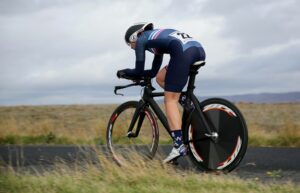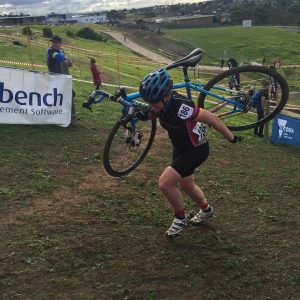Part 3 of 3: SO, WHAT IS MINDSET?
This series of articles was inspired by a few conversations I had with women who are relatively new to racing as well as a conversation in SheRace; SheRace is a closed Facebook group dedicated to encouraging more women into racing.
Our mindset is made up of the attitudes and beliefs that we hold about ourselves and our ability to manage various situations. Carol Dweck wrote about and popularised the most common understanding of mindset. She described the difference between having a fixed mindset versus growth mindset.
A fixed mindset is when we believe our abilities are fixed and unchangeable; the effect of this is that we are likely to limit ourselves to activities we know we do well and are more likely to avoid challenges.

Having a growth mindset is characterised by the belief that one can grow and learn. We are more likely to embrace challenges and consider failure as an opportunity to learn.
A fixed mindset is one that is preoccupied with, or has a fear of, failure and a growth mindset is one where there is an eagerness for learning new things and making new discoveries.
Understanding our own mindset and realising that it is possible to shift it can create change in how we approach and cope in various situations. Learning that we don’t have to be rigid in our understanding of our ability can mean that we are likely to approach situations from a different perspective.
HOW CAN OUR MINDSET AFFECT OUR RACE PERFORMANCE?
Here’s an example of how our mindset can affect a race situation: if we arrive at a race and all we’re focussed on is the calibre of riders we’re racing against, we’re less likely to be able to perform at our best.

The first time I raced an A-Grade Time Trial, I saw the start list and became focussed on these thoughts: “I’m so out of my depth, I’ll never beat these awesome women!” The reality was I was unlikely to beat them, but focussing on this train of thought was not going to help me to perform at my best.
If I’d arrived feeling nervous with a high heart rate and a matching fast and shallow breathing rate, tense shoulders, unable to eat enough to fuel my race, I would have struggled to complete my warm-up the way I needed to and then would have struggled to completethe event to the best of my ability.
I had to set my goals and go after them rather than focussing on the fact that they were frequently much faster than me. With the assistance of my coach I set a goal based on my abilities and aimed to set a personal best time on that course. I arrived focussed on my goal and was able to challenge myself to perform the way I wanted to.
SO HOW DO I SHIFT MY MINDSET?
The first step to shifting our mindset is to realise that we have the ability to shift our attention when we choose to. Shifting our attention can be hard or easy depending on our emotional state as well as the situation we’re in.
When we’re riding along a road and we notice a pothole up ahead we have a choice about where we focus our attention. We can focus on the hole – “that’s a big hole, that’s pretty deep, that will hurt riding over that, I wonder if that will puncture my tyre, why is that hole there, I wish the council would maintain the road/path more efficient ly, etc” – and the result will be that we end up riding over/through the hole. We might get a flat tyre, we might get jolted, we might fall off, either way it’s unpleasant. However, if we choose to focus our attention on the path around the hole – “that’s a hole, it’s smooth around it, I can navigate a safe path around to the left/right of the hole, there’s no traffic I can swing out and around, I’ll signal to the rider following that there’s a hole” – we are likely to navigate around the hole and continue on our ride without thinking further about the hole. This series of thoughts might happen without much real attention, or they happen so quickly and through habit that we don’t actually notice this is what we were thinking.
ly, etc” – and the result will be that we end up riding over/through the hole. We might get a flat tyre, we might get jolted, we might fall off, either way it’s unpleasant. However, if we choose to focus our attention on the path around the hole – “that’s a hole, it’s smooth around it, I can navigate a safe path around to the left/right of the hole, there’s no traffic I can swing out and around, I’ll signal to the rider following that there’s a hole” – we are likely to navigate around the hole and continue on our ride without thinking further about the hole. This series of thoughts might happen without much real attention, or they happen so quickly and through habit that we don’t actually notice this is what we were thinking.
Shifting our attention when there’s a hole in the road is an easier task than shifting our attention from one set of unhelpful thoughts to a more helpful set of thoughts. And it takes time for a new more helpful pattern of thinking to become our default. If we are more likely to focus on a fear of failure it can take many repetitions of a new more helpful pattern of thinking to shift our focus to a growth mindset where we might be more likely to focus on the challenge and opportunity to learn that is presented to us.
There are a few steps that we might take to learn what is happening in our mind in the lead-up to a race, when we are racing, during training sessions, or during other activities where we might want to perform to our best.
How am I currently thinking about my abilities? What is my internal dialogue during training, event, race, activity? What am I telling myself about myself? Am I being a negative critic or a positive coach?

It can be difficult finding these thoughts, or remembering them. If you can remember or you do know what you tell yourself write these thoughts down. If you can’t remember I find a good way to find these thoughts is to sit with a pen and paper and start to think about the activity or event and then just allow yourself to write about how you’re feeling and what you’re thinking. When you’ve finished, review what you’ve written and pull out the big things that you think are unhelpful.
What would I like to be telling myself? What would I like to be thinking about the event, race or activity?
Do you know what helpful thoughts you’d like to be having? You might like to jump ahead and have a think about your goals for the event/race/activity. The thoughts that would be helpful for you might also reflect your level of ability. It doesn’t make much sense to be telling yourself that you can be the first rider to the top of a climb when you know that you struggle climbing.
I know I’m not the fastest climber, I know I’m not going to ride a longer climb first. When I started riding up hills all I could think was “this hurts, I don’t like this, when is it over, I’m being dropped, I wonder if I can just stop here”. Now, after years of cycling I mostly enjoy riding up hills, so my internal dialogue when I’m climbing might look a little like this: “Just keep pedalling, this hurts, but the feeling at the top will be awesome, I can keep the distance between me and that rider up ahead steady, or maybe I can slowly close the gap, the descent down the other side, or back down this hill, is going to be fun, breathing, keep it steady, in through the nose, out through the mouth, I climbed slower last time, I can hold this power… can I keep it here?, I’ve only got 5, 4, 3, 2, 1km, 500m to go to to the line/summit, done, I did it, that feels good!”
Reframing…
 This is the most important step, it’s how we shift those unhelpful thoughts into more helpful thoughts. It’s about shifting the perspective from which we’re thinking. This is what could be called the ‘money-shot’. The best way to explain this is to give an example of how to reframe a thought from being unhelpful into being a helpful thought. So I’ll take the unhelpful thoughts listed above and reframe them here:
This is the most important step, it’s how we shift those unhelpful thoughts into more helpful thoughts. It’s about shifting the perspective from which we’re thinking. This is what could be called the ‘money-shot’. The best way to explain this is to give an example of how to reframe a thought from being unhelpful into being a helpful thought. So I’ll take the unhelpful thoughts listed above and reframe them here:
- “This hurts.” becomes “This hurts temporarily, and it will be over soon. And everyone is hurting the same.”
- “I don’t like this.” becomes “This is a challenge and it will feel great when I’ve completed it.”
- “When is it over?” becomes “With every pedal I’m getting closer… 1km to go.”
- “I’m being dropped or left behind.” becomes “If I keep practising I’ll get faster and will be less likely to be left behind.”
- “I wonder if I can just stop here.” becomes “I could stop here and I wouldn’t finish or I can keep riding and finish; I choose to keep riding and finish.”
Goal-setting can also be helpful, especially when it comes to performance related activities. Ensuring that these goals are SMART – Specific, Measurable, Achievable, Realistic, & Time-limited
Choosing and working through a goal-setting process where we ensure that what we’re aiming to achieve meets the SMART outline is helpful when attempting to find the message you’d like to be able to tell yourself about yourself and about your progress. Setting a goal to get fitter isn’t a SMART goal. But setting a goal that you want to be able to race a specific course, in a specific grade, without getting dropped by the end of the race season is more SMART. If you want to reach higher, and it is realistic to do so, you might add in that you want to podium. Or maybe you want to be able to win from a breakaway by the end of the season, or to be able to chase back on if you get dropped. Maybe your SMART goal is going to be about learning to apply specific strategies before winning and racing a higher grade.
Now the challenge is to take this ideas and new perspectives and apply them. It’s can take time to practise and over time with repeated practise the new way of thinking becomes habit.

If you have further questions about the ideas presented in this series of articles, please feel free to contact me via my website or my Facebook page @EnhanceLifePsychology. I am more that happy to discuss how these ideas might be applied to areas other than cycling.
